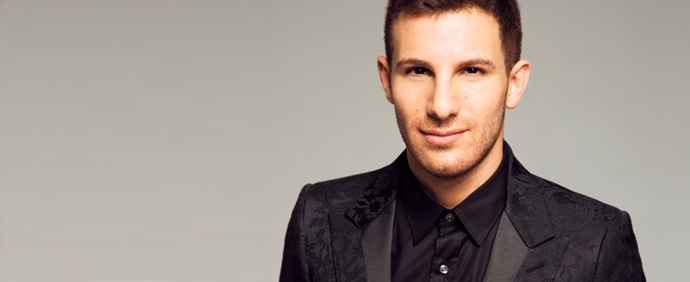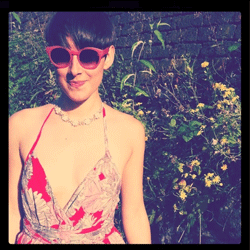The world's most famous fashion magazine, the UK Parliament and a fashion research academic have this past month made high-profile announcements relating to diversity and body confidence. The Vogue Health Initiative, the first of its kind in the high-fashion magazine industry, has been drawn up in order to
"encourage a healthier approach to body image within the industry"
. Ben Barry, the CEO of a diverse model agency in Canada, has published research showing that women's buying intentions (how likely they are to buy something) are positively affected when they see models who more closely represent them in terms of age, size and ethnicity. Also published this month, the report of the All Party Parliamentary Group (APPG) on Body Image gives important context to the movement for improving body confidence by exploring the far-reaching effects of negative body image on the UK population.
All Walks co-founders Caryn Franklin and Debra Bourne have been regularly attending the APPG on Body Image, led by Lib Dem MP Jo Swinson, at Westminster. The group's recently published report gives an overview of the state of body image and body confidence in the UK today, revealing that negative body image is widespread and that it can have hugely detrimental effects on an individual's personal and social relationships, including at work and in schools. Here are a selection of the report's key findings:
- 60% of adults report that they feel ashamed of the way they look
- 70% of adult women and 40% of adult men report that they have felt pressure from television and magazines to have the 'perfect body'
- 34% of adolescent boys and 49% girls have been on a diet to change their body shape or to loose weight
- It is estimated that roughly two thirds of adults suffer from negative body image
- 42% of girls and young women feel that the most negative part of being female is the pressure to look attractive
- A third of men would sacrifice a year of their life to achieve their ideal body
It is in this context then, that we can see how important it is that a healthy, diverse body image is promoted. The fashion industry, with it's great power to communicate to the public about their appearance, has often been guilty of promoting a very narrow body image ideal that excludes the majority of the population; a fact that Anna Wintour, the Editor in Chief of American Vogue, noted in her
Editor's Letter on the initiative:
"For an industry that should be about empowering women of all shapes, sizes and ages, too often the image of attractiveness it has projected has been entirely at odds with that message."
The Vogue Health Initiative then, is an acceptance of the responsibility that comes with their power, as Alexandra Shulman of British Vogue acknowledges in her June Editor's Letter, in which she states:
"As one of the fashion industry's most powerful voices, Vogue has a unique opportunity to engage with relevant issues where we feel we can make a difference."
Jonathan Newhouse, the international chairman of Conde Nast, expanded on the reasoning behind the initiative, stating that:
"Vogue believes that good health is beautiful. Vogue editors around the world want the magazines to reflect their commitment to the health of the models who appear on the pages and the wellbeing of their readers."
The Vogue Health Initiative, signed by all 19 international editors, is made up of the following six key points:
- We will not knowingly work with models under the age of 16 or who appear to have an eating disorder. We will work with models who, in our view, are healthy and help to promote a healthy body image.
- We will ask agents not to knowingly send us underage girls and casting directors to check IDs when casting shoots, shows and campaigns.
- We will help to structure mentoring programmes where more mature models are able to give advice and guidance to younger girls, and we will help to raise industry-wide awareness through education, as has been integral to the Council of Fashion Designers of America Health Initiative.
- We will encourage producers to create healthy backstage working conditions, including healthy food options and a respect for privacy. We will encourage casting agents not to keep models unreasonably late.
- We encourage designers to consider the consequences of unrealistically small sample sizes of their clothing, which limits the range of women who can be photographed in their clothes, and encourages the use of extremely thin models.
- We will be ambassadors for the message of healthy body image.
In order to achieve point number five, Vogue may want to present the research findings of Ben Barry to designers reluctant to alter their sample sizes.

Ben Barry, founder and CEO of a diverse model agency in Canada, has recently published the findings of his academic research into how body and beauty representation in fashion advertising affects a woman's likelihood to buy a product. It has often been assumed by the marketing industry that a woman's insecurity about not looking like the model in the advert has led her to buying the product in order to become closer to that ideal. Ben Barry's ground breaking research proves that this simply isn't the case. The author explains:
"My study found that women increased their purchase intentions by more than 200 percent when the models in the mock ads were their size. In the subgroup over size 6 [UK 10], women increased their purchase intentions by a dramatic 300 percent when they saw curvier models. Conversely, when women saw models who didn’t reflect their size, they decreased their purchase intentions by 60 percent, and women over size 6 dropped their purchase intentions by 76 percent.
My results weren’t limited to the issue of size. Consumers increased their purchase intentions by over 175 percent when they saw models who reflected their age; in particular, women over the age of 35 increased their purchase intentions by 200 percent when they saw older models. When models didn’t reflect their age, consumers decreased their purchase intentions by 64 percent. Furthermore, black consumers were 1.5 times more likely to purchase a product advertised by a black model.
When one mature woman saw an older model, she explained: “[The model] does more than make me feel beautiful; she inspires me to go out and get this dress and celebrate my beauty.”
- Elle Canada
It is clear that the celebration and promotion of diverse body and beauty ideals in the fashion industry and beyond makes sense not for ethical reasons alone, but for business reasons too. It is no longer a tough call to do the right thing, it is a no-brainer that will hopefully now be realised across the industry at an accelerated pace.
***
RELATED: Read All Walks co-founder
Caryn Franklin's challenge to Vogue
***
Words
Charlotte Gush
***
 |
Charlotte Gush is a freelance fashion writer, blogger and editor, as well as the Online Commissioning Editor for All Walks.
She has previously spent 6 months working for All Walks at the London office as a social media, marketing and production intern.
Charlotte writes a fashion, street style and personal style blog, CAVACOMA.com, with a dedicated Facebook fanpage here, and a Twitter account @CavaCharlotte |
Jun 05, 2012 | Categories: Blog | Tags: Alexandra Shulman, All Party Parliamentary Group on Body Image, American Vogue, anna wintour, APPG, ben barry, body confidence, British Vogue, caryn franklin, Debra Bourne, diverse models, fashion advertising, House of Commons, negative body image, purchase intentions, research, UK, vogue, vogue health initiative | Comments Off
As colleges gear up to show their latest collections at Graduate Fashion Week, we at All Walks can reveal that diversity is firmly on the agenda.
Students at Edinburgh College of Art have been working with All Walks on a project that replaces inanimate tailor's dummies with real and opinionated women, who give the students crucial feedback about their designs.
After all, training on a lifeless dummy and a model who is paid to stay silent (both presenting only one body type, and without movement) is not a rounded training, we say!
The fact is that
all women, apart from the odd catwalk model, have ordinary bodies and design students must understand the needs of ordinary women if they are to make a lucrative business; and as these great designs show, creativity is not compromised. Emotionally considerate design is possible, and working on a model with a realistic body shape
is a necessity.
Why? Well, as Mal Burkinshaw - course leader at Edinburgh College of Art, who has created this project with us - says, it has made a huge impact on the learning of the students.
Mortwenna Darwel, one of the students, agrees, "I gained a much better understanding of the relationship between real women and fashion."
Jennifer Alexander adds: "I feel I've learned a lot from fittings and communicating with my All Walks muse. From this project onwards, I will take into consideration who I design for and how my garment will make the person feel."
We'd like to thank all of the tutors at Edinburgh who have worked hard to embrace diversity by introducing a range of bodies and ages into the training, in order to help students understand the true meaning of emotionally considerate design and practice.
***
Post by Caryn Franklin, All Walks co-founder
***
Credits: 1. Pam Craig wears blue dress by Shauni Douglas. 2. Eileen Reilly wears green dress by Isabella Lyginou. 3. Sarah Saunders wears red dress by Laura Jayne Nevis, and 4. Collette Nelson wears maroon and pink dress by Louis Anderson Bythell
***
Editor
Charlotte Gush, on Twitter
@CavaCharlotte
May 19, 2011 | Categories: Blog | Tags: +size, age, All walks, all walks beyond the catwalk, allwalks, caryn franklin, Centre of Excellence, diverse design, diverse models, diversity, Edinburgh College of Art, emotionally considerate design, fashion show | Comments Off

